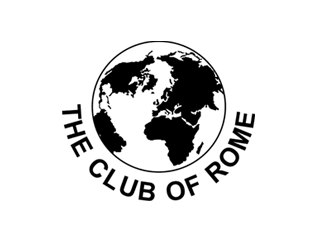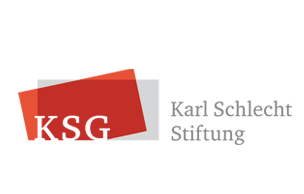Summary of Workshop #6: Inequality
Income and its Distribution
Functional Income Distribution:
GDP (gross domestic product) is the most common measure of the economic performance of a country in a given year. We can consider three sides of the GDP: Its creation, its disposition and its distribution. Talking about the distribution of GDP, or in the context of this workshop, distribution of income, we can make a functional distinction between labour and capital income. Functional income distribution focuses on wage share or profit share, respectively. Wage share is defined as wages divided by GDP at factor costs. Since the 1980s, wage shares in the EU have decreased by a considerable margin, i.e. there has been a shift from labour income to capital income. This development is a result of labour-saving technological progress, globalization, flexibilisation and lower bargaining power of labour unions.
Personal Income Distribution:
While functional income distribution focuses on the distinction between capital and labour income, personal income distribution categorizes persons by their income level from lowest to highest. It is also possible to look at global income distribution. According to Milanovic, three different concepts can be considered (Milanovic 2013). Concept 1 compares average GDPs per capita of all countries, while Concept 2 includes the countries’ population sizes by weighing their GDP per capita accordingly. Concept 3 inequality, however, goes beyond national distinction and represents the personal distribution of the whole world as if it was one big country, thus making it possible to compare personal income groups globally.
There are different theories on how inequality develops over time - the most common concept for a long time was the Kuznets Curve (Kuznets 1955). According to Kuznets, income inequality is low at low GDP levels and rises when GDP levels increase. At high GDP levels, income inequality decreases again. Piketty, however, regards rising inequality as an inevitable feature of capitalism (Piketty 2014), while Milanovic speaks of so-called Kuznets-waves, meaning that inequality increases and decreases cyclically (Milanovic 2015).
In the past decades, we have seen a strong increase in inequality in most countries. However, mainly due to China’s and India’s extraordinary development, global inequality has decreased. There are clear patterns of how functional income accrues: The proportion of capital income in low-income groups is much lower than in high-income groups, i.e. persons with high income are likely to obtain a significant share of their income from capital gains.
A person’s income level also depends on their ethnic background and their gender. Gender pay gap, i.e. the difference in pay between men and women amounts to around 21% in Austria.
Wealth and its distribution
Wealth are all material and immaterial goods, to which a certain value is assigned and over which the owner can freely dispose. Amongst others, wealth includes monetary assets, real estate, and valuables but also patent rights. The accumulation of wealth takes place through saving, inheritance and capital income. Data on the distribution of wealth is generally poor and hardly available, especially compared to the statistical data on income. Sources of data are administrative data and surveys, which tend to underestimate top wealth. For that reason, there is very little research concerning this. However, tendencies show that in comparison with income wealth is more unequally distributed resulting in a higher Gini-coefficient. An increase in wealth inequality can be expected as a high concentration of capital leads to a higher concentration of capital income. Through the mechanism of inheritance does not only hold for individuals but also applies to an intergenerational time-frame.
This trend could be anticipated by implementing instruments for redistribution such as an inheritance tax or a wealth tax.
Macroeconomics of Inequality
A fundamental issue to tackle when discussing inequality is the relationship between inequality and economic growth. A classical starting point to this debate is Okun’s (1975) hypothesis of an inevitable trade-off between distributional equality and efficiency. He put forward the argument that an efficiency-oriented market economy is bound to produce inequality, while democratic institutions might be able to reduce inequality at the expense of economic efficiency. Some of the different supply and demand side arguments to take into consideration when evaluating this claim are:
Supply Side (mainly neo-classical) Arguments:
- Incentives: Targeting inequality through redistribution is sometimes believed to entail the danger of reducing incentives to work, invest or innovate, thereby leading to a decrease in macroeconomic growth.
- Human Capital: Workers need to be able to invest in education to increase their productivity. If there is a high level of inequality, low-income groups cannot sufficiently invest in education and the productivity of an economy’s workforce deviates from its potential.
- Social Stability: High inequality can lead to political and socio-economic instability (e.g. extremism, populism). Systemic instability can, in turn, hamper economic growth (e.g. through discouragement of investment).
Demand Side (mainly (post-)Keynesian) Arguments:
- Consumption Effects: Contrary to the permanent income hypothesis (Friedman), Keynesians assume a higher marginal propensity to consume among lower income groups. So, in a closed economy transfers to lower income groups increase demand and in turn investment and production. (This may be intensified through so-called accelerator effects)
- Functional distribution, wage-led vs. profit led: Assuming consumption, investments, and net exports are all functions of the profit share of income distribution, one can estimate the effect of changes in the income distribution on GDP. If this effect is negative (positive), an economy can be regarded as wage-led (profit led). In a review of the literature Stockhammer and Onaran (2013) conclude that most large economies are believed to be wage-led. In those economies, higher labour shares would have a positive effect on growth.
Several empirical studies (e.g. Ostry 2015) find that redistribution does not have negative effects on economic growth. However, Ostry presents some evidence that lower inequality can be associated with higher growth rates.
Till van Treeck (2015) summarizes the most common arguments on inequality and economic growth. He concludes that low-income inequality affects GDP growth rate positively. In sum, Okun’s trade-off hypothesis seems questionable.
Society, Inequality and Power
The topics of inequality and social mobility are tightly linked. Looking at society from a sociological perspective, we can distinguish three different classes as defined by Bourdieu: The upper or ruling class, the middle class and the public class. Criteria for distinguishing classes are given by three types of capital, which are economic capital, cultural capital and social capital. Depending on the structural composition of the three types, persons are attributed to their respective classes. The members of each class possess a particular perception of the world that depends on the class they were socialized in. Bourdieu calls this „Habitus“.
Looking at social mobility from an economic perspective, a distinction can be made between educational mobility, mobility of income, geographical mobility and professional mobility. These types of mobility are not based on a fixed time horizon. The so-called Great Gatsby Curve shows that generally, social mobility decreases with increasing Gini, i.e. with increasing income inequality. Historical studies have shown that a person’s income is to a large extent determined by the income of their ancestors, even choosing very long time spans. The same is true for a person’s level of education.
In debating inequality and social mobility, differentiating between equality of opportunity and equality of outcome is important. According to Roemer, a person’s opportunities are determined by their circumstances and abilities, while it is important to note that circumstances are in part dependent on equality of outcomes (of their ancestors).
Inequality also has implications for power and democracy. According to Max Weber, power is the ability of one person to exercise influence on another person against their interest. Different schools of economic thought all have their own take on the character of power. Classic economists like Smith would argue that power is characterized by asymmetries of wealth, education and information between classes. Neoclassical models are not able to include power, except for special cases like monopolies or oligopolies as they only contain individual agents, not classes or groups. Outside the mainstream, we can find different stances on power, like Kalecki, who argues that capitalists are not interested in full employment because it would diminish their power, or Marx, who considers a power struggle over means of production. Indeed, we can see that in various democratic societies wealthy groups skew the political process to their advantage. Michael Gilens points out that if wealthy and poor people have opposing interests, political decisions tend to be made in favour of the wealthy.
The Middle Class and Capital Income
The middle class is a controversial concept in social sciences. Whereas economists mainly focus on how income is distributed, sociologists also consider aspects such as the affiliation to various classes or milieus. Economically, the middle class is often defined as those households whose equivalent income varies within a certain margin around the median income. However, those margins vary depending on the definition of the respective organization. Most of the time, the margin ranges from 60% to 200% of median net equivalent income. Net equivalent income refers to a measurement method that aims to make households with different structures comparable. When asked about their own position within the distribution of wealth, particularly higher net worth households tend to underestimate their high position and rather consider themselves as part of the middle class. The term “middle class “, however, is also viewed critically as it creates separation from the “upper class” and “lower class”. Thus, many believe that arguments related to the middle class are only used to disguise class differences to the benefit of the “upper class”.
Capital income refers to income from rents, interest or dividends; income from work is completely excluded. Thomas Piketty has put capital income back into the spotlight. According to his empirical research, the development of capital income follows a U-shaped curve. While generally an increase in capital income as such does not necessarily entail an increase in wealth inequality, empirical data shows that the capital income going to the top decile of the distribution has dramatically increased in past decades. The concentration of wealth at the top had been reduced after the two world wars and has therefore been lower throughout a significant part of the 20th century. Piketty claims that wealth inequality is moving back towards levels comparable to those at the end of the 19th century. According to Piketty, this the result of the inequation r>g, which means that the return on capital tends to be higher than economic growth and will thus inevitably lead to a higher concentration of wealth at the top. He estimates that this poses a threat to democracy and social cohesion. Therefore, Piketty is in favour of a high progressive wealth tax, high-income taxes for top earners and more transparency and democratic control over capital. This should be combined with the abolition of the banking secret and coordinated action against tax evasion.
Referring to Piketty’s fundamental law of capitalism, Branko Milanovic states that higher capital income does not necessarily lead to higher personal inequality. For this to happen, three conditions have to be fulfilled: 1) Capital income has to be reinvested into the accumulation of capital; 2) capital income has to be distributed more unequally than labour income; 3) a strong correlation between capital income and overall income is necessary. Since all three of those conditions are fulfilled we find ourselves in a capitalist system with increasing inequality, Milanovic states. To reduce inequality, he proposes to give more equity shares to workers and thus distribute profits more equally. Furthermore, he proposes mechanisms such as a sovereign wealth fund in combination with Piketty’s proposals for higher wealth or inheritance taxes.
According to Marcel Fratzscher, wealth inequality in Germany is exacerbated by the fact that Germans save, but make bad investments, such as in cars and savings accounts. They should thus invest more in real estate, equity shares and bonds. Therefore, education to increase financial literacy and programs that encourage real estate acquisition is needed.
Inheritance
In many countries, massive amounts of wealth are passed on from generation to generation by inheritance. They are a major factor for inequality of opportunities, giving a head start to a few privileged. That means that for poorer parts of the population it is difficult to catch up with those who inherited a lot of wealth, undermining the principles of a meritocracy. In some countries, the introduction or expansion of an inheritance tax is subject to controversial discussion.











